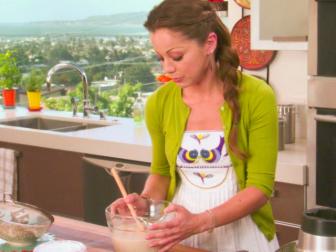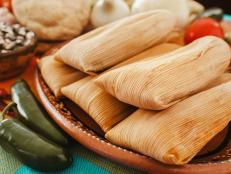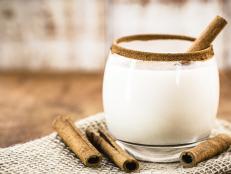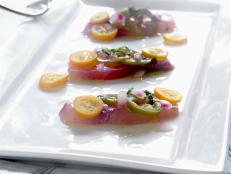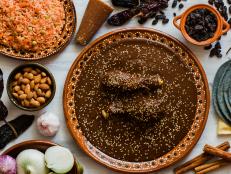What Is Horchata?
From the original creamy Spanish version to the herbaceous Ecuadorian version, horchata represents a wide variety of refreshing beverages. Learn all about this favorite Hispanic drink here.
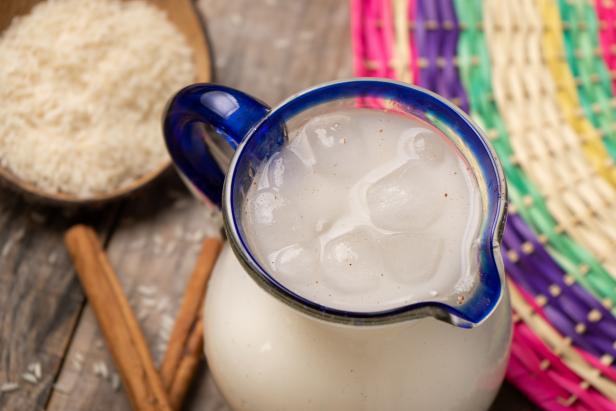
carlosrojas20 / Getty Images
By Carlos C. Olaechea for Food Network Kitchen
Carlos is a contributing writer at Food Network.
Horchata is a favorite Mexican beverage that has made its way into the United States and beyond. The sweet, creamy taste of this beverage is delightful on its own, and many chefs have also come up with scrumptious desserts that mimic it. There is now even a horchata-inspired liquor you can buy in bottles. However, horchata is much more varied than what you may think, and there are many versions of horchata throughout the world. From its origins in Southern Spain to its modern preparation in Ecuador, horchata has gone through many changes as it has traveled throughout the Western Hemisphere. Here we explain the origin and history of horchata, along with the different types of horchata and how it’s made. We’ve even included some recipes to make this delicious drink at home.
What Is Horchata?
Horchata is a type of plant-based milk that is usually sweetened and sometimes flavored with spices, extracts and other ingredients. While Mexican-style horchata is the most commonly known variety in the US, horchata actually originated in Spain, and there are various types of horchatas throughout the Spanish-speaking world.
Horchata was born in the region of Valencia in Southern Spain. Since at least the time of the Roman Empire, Mediterranean cultures have prepared a wide range of beverages made from grain. Horchata was one of these ancient grain-based beverages. The word horchata comes from the Latin term hordeata, which derived from the word hordeum, which means barley and referred to an ancient barley beverage. However, the horchata enjoyed in Spain today is more of a sweetened nut milk (more on that later), rather than a barley drink.
When the Spanish invaded and later conquered the Americas, they brought the tradition of horchata with them. However, horchata began to adapt to local Latin American tastes and the ingredients that were available. As a result, there now exists different styles of horchata from Mexico to Ecuador. Some types of horchata are simple, creamy and closely resemble the original Spanish horchata. Other types, however, only retained the name horchata while developing into completely different beverages.
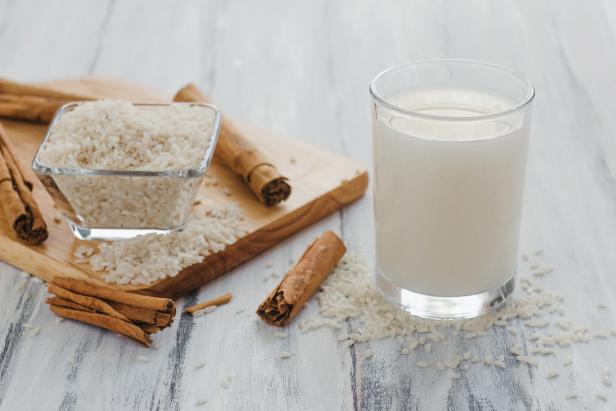
Marcos Elihu Castillo Ramirez / Getty Images
What Is Horchata Made Of?
The original horchata from Valencia, Spain is made from chufa, or tiger nuts, water, sugar and a sprinkle of ground cinnamon. Tiger nuts didn’t grow in the Americas when the Spanish arrived, so the Spanish used different nuts, seeds and grains to recreate horchata in their colonies. Native American peoples and enslaved Africans also contributed to the creation of local versions of horchata in Latin America with their own ingredients, flavorings and methods. As a result, horchata can be a different type of beverage depending on where you are.
The Different Types of Horchata and How to Make Each
It’s a good idea to be familiar with the different types of horchata so you know what to expect if you see it on a menu. Below are some of the most common types of horchata that exist.
Most types of horchata are made in a similar way: you soak the grains, nuts or seeds in hot water and then blend them with water and other ingredients. You then strain the mixture through a sieve or cloth to obtain a smooth beverage.
Get the Ingredients
Spanish Horchata de Chufa
What it is: The Spanish style of horchata is the type that is closest to the original ancient horchata. Historians believe that it originally came from North Africa and was brought to Southern Spain with the Moors, where it became a popular beverage. The region of Valencia is the center of horchata in Spain.
What it tastes like: It has a very creamy and smooth texture similar to milk. The flavor is close to almond but not as sweet, and it has a slightly bitter aftertaste. It’s typically made no sweeter than a milkshake.
How to make it: Spanish horchata is made from chufa, or tiger nuts. These need to be soaked in hot water for at least four hours. You then blitz them in a blender with fresh water and sugar until smooth. Pour the milky liquid through a fine mesh strainer or cloth to separate the solids from the liquid. Transfer to a pitcher and chill in the refrigerator
Mexican Horchata
What it is: Mexican horchata is perhaps the most commonly known type of horchata in the Western Hemisphere, and it has become extremely popular in the United States. Because tiger nuts are not available in Mexico, this type of horchata is typically made from rice and cinnamon. It is sweetened with white sugar, and some recipes enhance the richness of this type of horchata with some milk. In different parts of Mexico, horchata can also be made with melon seeds, almonds and/or coconut.
What it tastes like: Mexican horchata isn’t as creamy as Spanish horchata (unless you add milk), and it can sometimes be a little gritty from the rice. However, it is usually much sweeter than Spanish horchata and has a strong cinnamon flavor.
How to make it: For Mexican horchata, wash and rinse long-grain white rice a couple of times to get rid of any residue, which can be bitter. Soak the rice in hot water with a stick of cinnamon overnight, then process everything in a blender along with sugar and milk. You typically don’t add more than one part milk to four parts water to Mexican horchata. Once smooth, strain the liquid into a pitcher and refrigerate.
Puerto Rican Horchata
What it is: Puerto Rican horchata is made from sesame seeds, water and sugar. This is a simple recipe similar in preparation to the Spanish-style horchata in that it doesn’t include additional spices or ingredients.
What it tastes like: Sesame seed horchata is rich and creamy like Spanish horchata and has a similar slightly bitter aftertaste. Where it differs in flavor, however, is in its nuttiness.
How to make it: Use untoasted sesame seeds to make this type of horchata, and make sure to soak them in hot water for at least four hours or up to overnight. Then process the sesame seeds with fresh water in a blender, along with sugar, until smooth. Strain into a pitcher and refrigerate.
Central American Horchata
What it is: There isn’t just one type of Central American style of horchata but rather several versions that vary from one country to the next in this region. In countries like Honduras and El Salvador, the most important ingredient in horchata is semilla de jicaro (often called morro seed), which comes from a type of calabash and has a licorice-like flavor. This is blended with other spices and sometimes cacao, nuts and other seeds. Some Central American versions can also include rice, but morro seeds are almost always a must.
What it tastes like: Central American horchatas are milky, like the Mexican varieties. However, they often include more ingredients and have a more complex flavor.
How to make it: The ingredients in Central American Horchata – the morro seeds, cinnamon, nuts and other spices – should be toasted. You can also soak the morro seeds, although some recipes call for grinding all the ingredients dry to make a sort of horchata mix. Some recipes may also call for pre-soaked rice, which is soaked separately from the other ingredients. Like other types of horchata, all the ingredients get blended together with water (or sometimes water and milk) and strained before serving.
Ecuadorian Horchata
What it is: Ecuadorian horchata is entirely different from the other types of horchata on this list. This type of horchata comes from the city of Loja in south-central Ecuador and is more like a tea than the milky types of horchatas found throughout the rest of the Spanish-speaking world. Ecuadorian horchata is made from a combination of about 18 different herbs and flowers and is renowned for its medicinal properties. Many people have their own secret combinations of botanicals, and many Ecuadorians buy a ready-made blend to make it at home. Ingredients for this type of horchata can include chamomile, mint, lemongrass, borage, roses, violets and carnations. To give it a pink-to-red color, bloodleaf and red amaranth are also added to the mix.
What it tastes like: The flavor is like an herbal, slightly floral fruit punch.
How to Make it: The combination of herbs and flowers used to make Ecuadorian horchata is oftentimes too complicated to source outside of Ecuador. Even if you can find some of the flowers required - like carnations and fuchsia flowers, they may have been treated with harmful pesticides in the United States. Most expats (and even people in Ecuador) use an horchata blend that is made in Ecuador and exported abroad. Ecuadorian horchata is brewed like a tea for about five to ten minutes, strained, sweetened and then enhanced with lime juice. Sometimes, aloe vera gel or flax seeds are added to the finished horchata.

RossHelen / Getty Images
How to Serve Horchata
From Spain to Central America, horchata is almost always served ice-cold. You can pour it over ice, if you want. This is particularly handy if you’re serving horchata outside or if your batch is extra rich and/or especially sweet. Otherwise, you can definitely enjoy horchata “neat” (i.e. without ice).
Spanish horchata is often served with a sprinkle of ground cinnamon over each glass. However, it’s not necessary. In Valencia, horchata is typically accompanied by fartons, a slightly sweet glazed pastry. Latin American styles of horchata are traditionally served on their own with no garnishes. However, you may sometimes see some more creative presentations, including a stick of cinnamon or a twist of citrus peel. Throughout Latin America, horchata can be enjoyed with any meal or on its own.
You can use any type of horchata to make boozy cocktails. Rum and horchata are a popular combination, although let your imagination run wild. Horchata can also be made into a frozen treat simply by freezing it into popsicle molds.
Horchata Recipes
Horchata
This is a basic recipe for Mexican-style horchata that only calls for rice, cinnamon and sugar. It's not only vegan but a good starting point for your own creative additions and flavorings.
Sweet Cinnamon Flavored Oatmeal Drink ("Horchata")
This recipe for horchata is inspired by the traditional Mexican version, except that it uses rolled oats instead of rice. You can sweeten this horchata with sugar or opt for agave nectar.
Horchata
This is a more extravagant recipe for horchata includes vanilla and almond extracts. It is also enriched with milk, for an extra creamy mouthfeel.
Related Links:




























